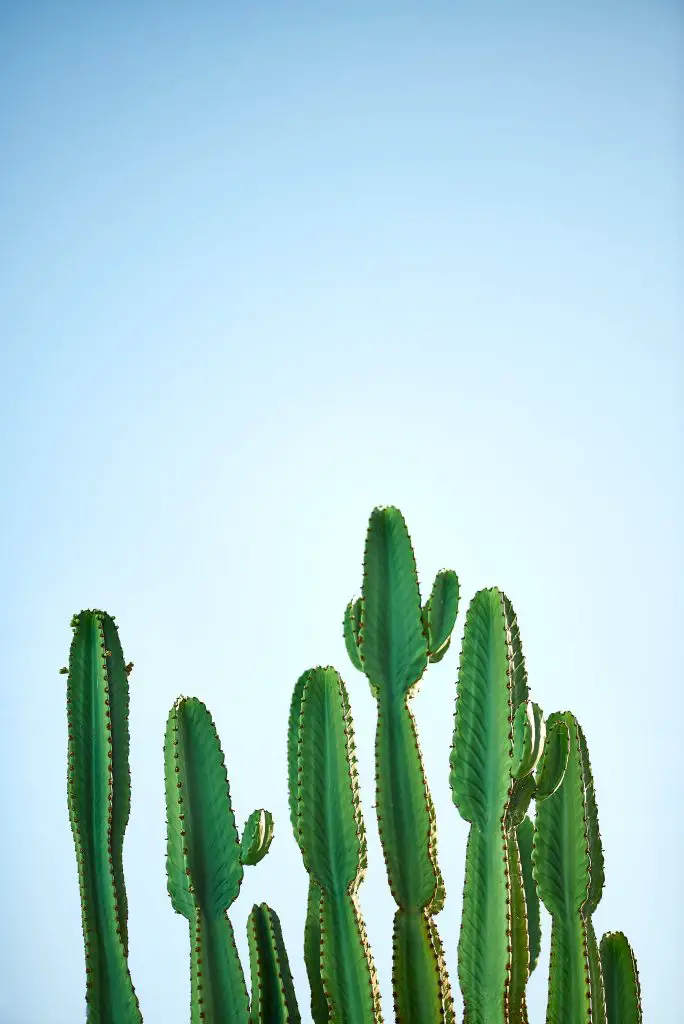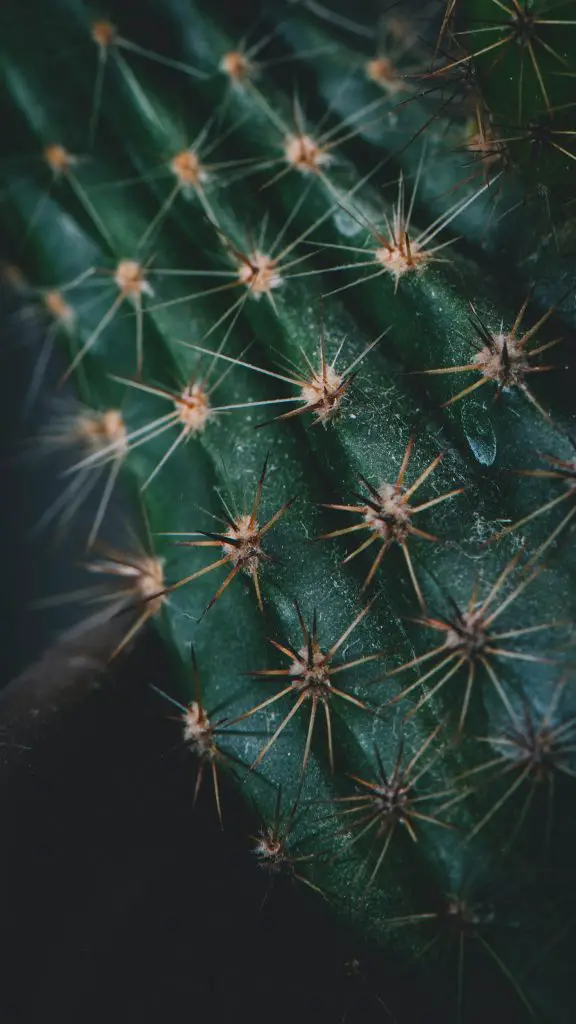Are Cactus Considered Trees? Some species of the Cactus are very large and can be sometimes thought of as trees but there are distinct features of the cactus that set them apart from other trees. So what is the difference?
Cactus plants are generally not considered trees even though some of them can reach a height of 60ft (20m). Members of the cactus family do not have woody stems, instead, they use their stems to store large amounts of water which allows them to survive in arid regions. Additionally, members of the Cacti family do not have leaves like trees, which also sets them apart from other succulents.
The Cacti are plants that are native to the Americas and can often be found near coastal areas or deserts where there is little rainfall. Within this family, there are 1,800 species divided up into 127 genera which vary in height from 0.5 inches to over 60 ft.
The common feature of cacti plants is the presence of spines or bumps on the surface of the stem of the plant which are known as Areoles. These Areoles are the primary distinguishing characteristics of the plant and serve several purposes which help the plant to survive.
They keep other animals from eating the plant, they reduce airflow near the surface of the plant reducing moisture loss and they provide shade in warm weather.

Similarities And Differences Between Cactus and Trees
Because giant cacti often resemble trees in appearance, size, and lifetime, the two might be mistaken for each other. This, however, should not lead you astray.
Shape
The majority of trees develop many stems and branches that reach in every direction. The purpose of these limbs maximize the surface area of the plant that is exposed to sunlight. The leaves attached to the stem serve to capture sunlight and carbon dioxide and convert it to sugars using photosynthesis. As a result of their thick canopy of leaves and branches, trees become excellent sources of shade.
Whereas Cactus plants tend to provide very little shade due to their lack of leaves. The reason for this is that evolution of the Cactus plants in dry arid conditions has necessitated the minimization of the plants surface area to retain sufficient water.
As a result of this the larger cactus species develop arms that resemble tree branches but are in many cases much thicker than trees and serve a very different purpose. Species, such as Saguaro and Mexican Cardon, can grow to great heights and may reach 60 feet in height.

Tissues from the Stem
There is a fundamental different in the way that the stems from the tree and cactus plants work. Both plants need the stems to provide structural support to the plant and carry components such as water and nutrients around the plant however the way that the plant develops overtime is fundamentally different.
In trees, there is an outer layer of the plant called the cambium that is the area of the tree where the new cells are generated. This area of the tree is responsible for the plant getting thicker year on year and creating the characteristic tree rings in the truck which are useful for determining the age of the tree.
The process produces a solid and stable support structure that enables the plant to support increasing amounts of weight. This stability allows the trees to get to a much greater size than cactus.
The cactus on the other hand contains sponge-like tissues in the stems that are designed to store enormous amounts of water. These stem are often ribbed which allows the size of the stems to expand and contract based on the available water in the environment. This allow the plant to take advantage of rain events that are often significant but infrequent in nature in arid climates.
Photosynthesis
Cacti and trees both produce food via photosynthesis but do it in a very different way. In all plants, photosynthesis uses water, carbon dioxide, and light energy absorbed by chlorophyll to make food. For trees to perform photosynthesis, the roots must absorb water and carry it to the leaves, where the chlorophylls are located and the carbon dioxide is absorbed.
Cacti, on the other hand, use photosynthetic pigments on their skin. There’s a particular food-making method they employ there called Crassulacean Acid Metabolism, which is unusual (CAM).
In this process the stomata of a cactus (the orifus in the cactus’ skin) only open at night to enable carbon dioxide and moisture into the plant, which reduces moisture loss. Malic acid a compound found in cactus cells, is used to help store the carbon dioxide acquired at night. During the day, the acid is converted back to carbon dioxide for use in photosynthesis. A similar process is also used by other succulent plants.

Storage Capacity for Water
Cactus and tree stems can both store water to help the plants remain hydrated, however the volume of water held by cactus plants is much higher than trees. According to researchers at Washington State University, a giant Saguaro cactus can absorb 4,800 pounds of water each year.
The water is absorbed and retained through the skin, spines and roots of the plant which are relatively shallow compared to trees. The shallow nature of the roots also the cactus to quickly absorb water during a downpour allowing cactus to grow again.
Trees are able to collect water through the leaves in the air however the vast major of the water is absorbed through the roots. The water that is absorbed by trees can only be retained for a short period of time due to the high rate of transpiration that occurs in the leaves.
This is because the moisture is lost when the stomata in the leaves is opened up to take in carbon dioxide. This results in the trees being far less resistant to protracted periods of drought.
Areoles
Cacti are the only plants with this characteristic on their body. Areoles, which are the little lumps on their skin that allow cacti to easily be distinguished from other plants, including succulents.
All Cactus, spines, and no spines have areoles. Since cacti differ in the structure of their areoles, this is often used to identify different species. Areoles are also the point where the cactus flowers from and new growth appears.

Longevity
Trees and Cactus plants are both perennial plants that in most cases will live several decades, at least, in favorable conditions. However, their life span can be much longer that this. The oldest cactus plants found in the wild have been around 300 years old and there are trees in the middle east for example that are over 2000 years old.
